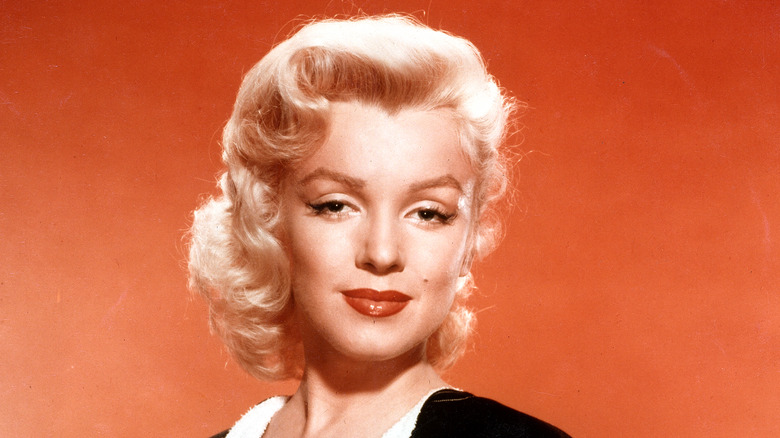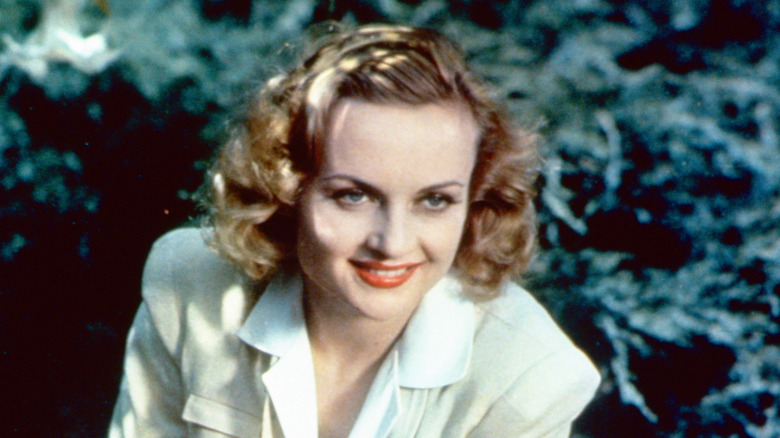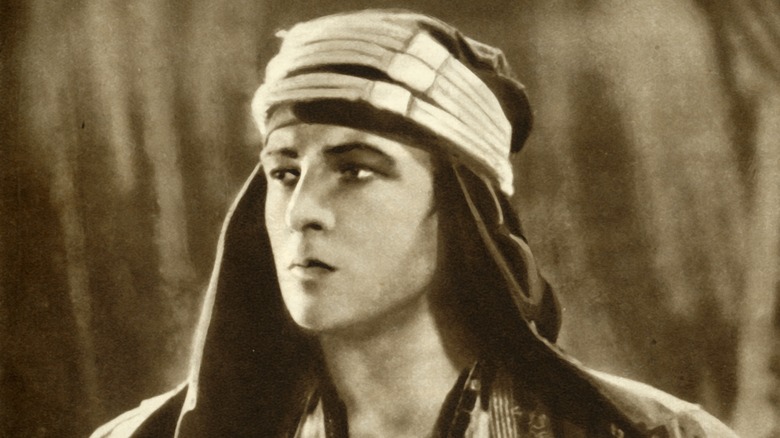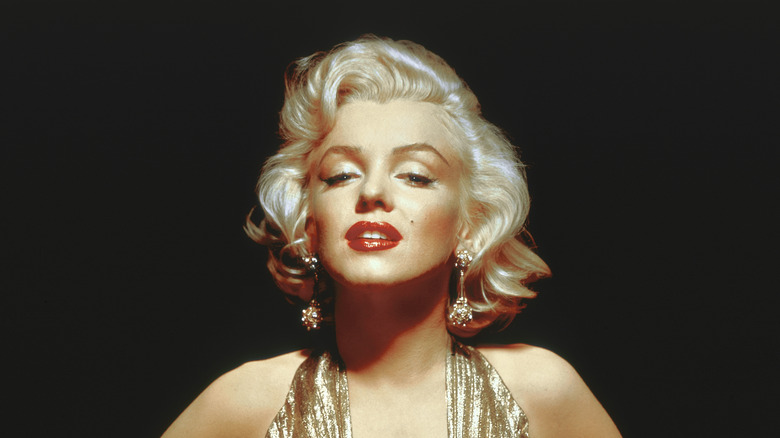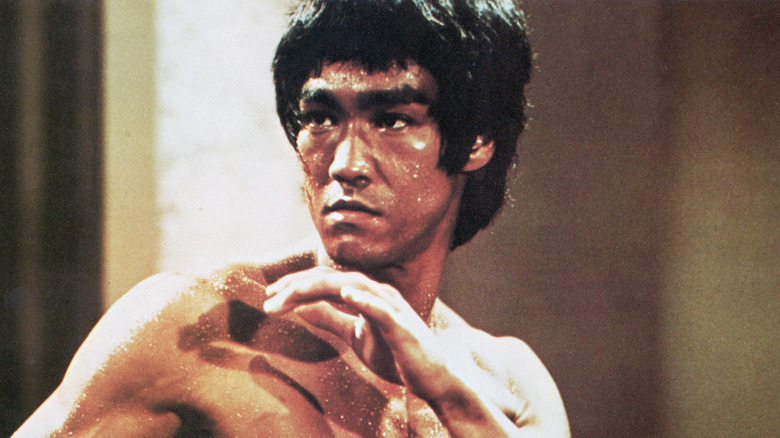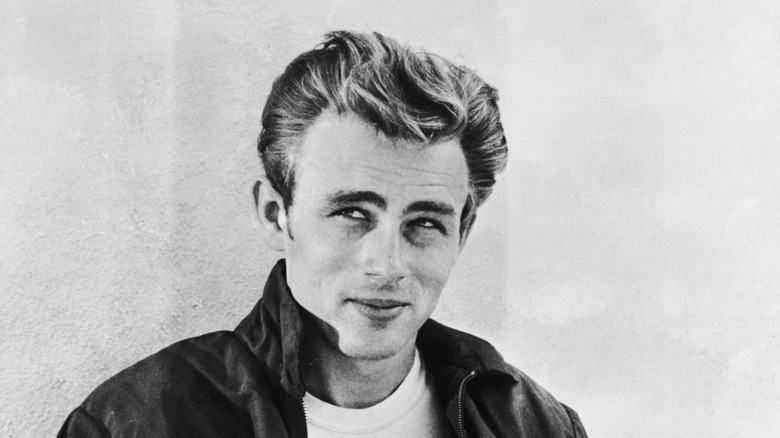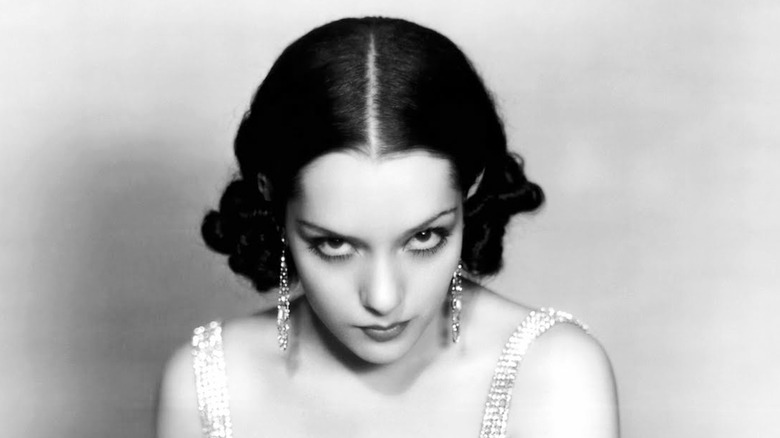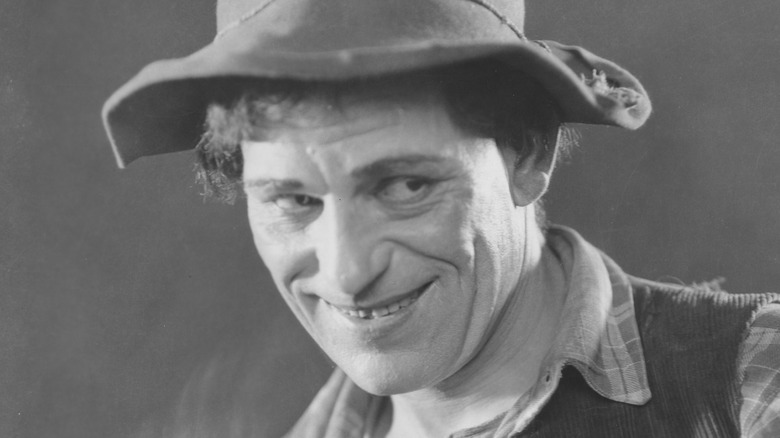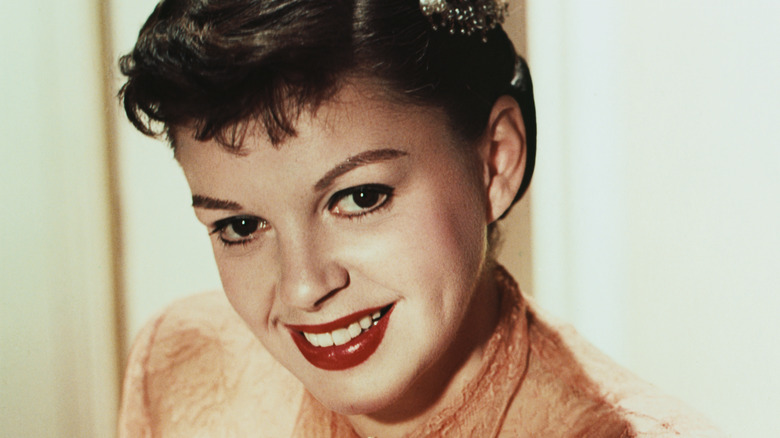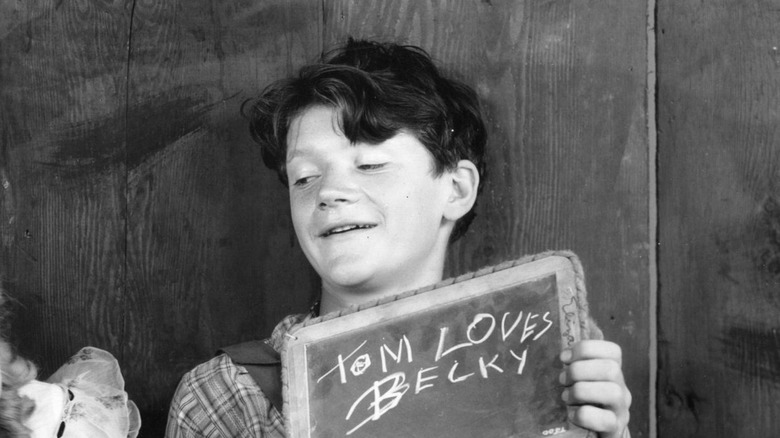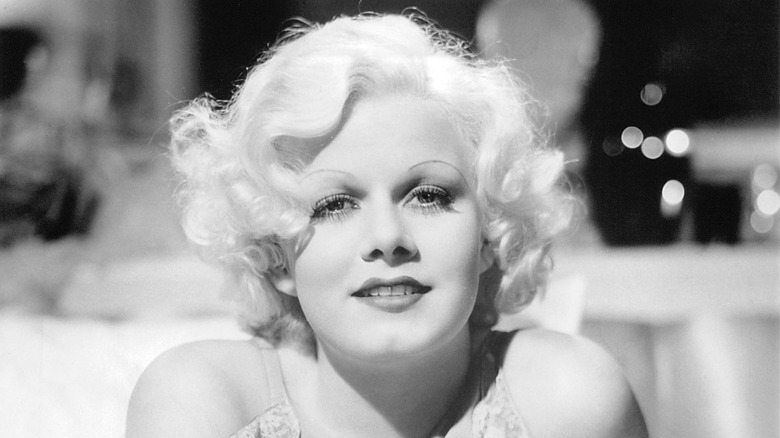Classic Stars Who Died At The Peak Of Their Fame
One day, a person can be on top of the world. The next day ... they can be dead. Life can be incredibly cruel that way for pretty much anyone, and of course, even the most famous people aren't exempt from this. In fact, if anything, the public is paying a whole lot of extra attention to celebrities who perish when they're still young and at the height of their powers. That's how the world winds up with strangeness like the "27 club" rumor that started a chilling superstition about white cigarette lighters and how they're a harbinger of untimely demise.
No matter how famous they used to be, it can be easy to forget some of the celebrities who lived and died many years ago. Some of the stars on this list have endured throughout the decades, their names cast in the bronze of legend long after their deaths. Others used to be the toast of the town, but have fallen into comparative obscurity since they passed away. Others still are well-known names, but you might not be aware of the tragic circumstances of their early deaths. Hollywood once celebrated them all, but they ended up sharing the same fate. They were all classic stars who died at the peak of their fame.
Carole Lombard
Carole Lombard was an early Hollywood comedy juggernaut who was nominated for an Oscar for her role in 1936's "My Man Godfrey." Since her husband happened to be Clark Gable, she was also one half of Tinseltown's hottest couple. Unfortunately, her career and life were cut short on January 16, 1942, when the 33-year-old superstar and her mother were aboard a plane that crashed near Las Vegas.
Lombard wasn't really supposed to be on this particular plane. She was an active fundraiser for the U.S. after Pearl Harbor, and had been touring the country to sell war bonds. However, after a massively successful event in Indiana, she decided to change her plans and surprise Gable by returning to Los Angeles earlier than expected. To do this, she and her mother stepped on the first available plane, TWA Flight 3. The flight's first two legs went without incident, but during a stop in Albuquerque, New Mexico, Lombard and her mother were asked to wait for the next plane due to an overbooking issue. However, unwilling to delay her return, she arranged for them to stay onboard Flight 3.
After starting the trip's last leg from Las Vegas to Los Angeles, the plane veered off course in the darkness and crashed into a mountain, killing everyone onboard. The destruction was so total that when Metro-Goldwyn-Mayer Studios' representative arrived on the scene, all he could find was a lock of hair that may or may not have belonged to Lombard.
Rudolph Valentino
Few can hold a torch to Rudolph Valentino when it comes to star power. He was not only Hollywood's arguably greatest sex symbol at the time of his death, but his demise was so surprising and dramatic that its cause was named after him.
Valentino rose to fame from unlikely beginnings. At first, he worked as a gardener and as a dance partner to socialite women at a prominent New York night club, but moved to Los Angeles to flee a scandal involving one of these ladies, who murdered her husband. His Hollywood breakthrough was 1921's "The Four Horsemen of the Apocalypse," and he went on to make multiple movies nearly every year until his death. Known as "The Great Lover" or "The Latin Lover," the Italian-born actor was as popular as a movie star could be during this particular era of Hollywood. His star, however, didn't burn for long. Valentino died on August 23, 1926, after a ruptured ulcer gave him peritonitis — an inflammation of the membrane that lines the abdomen. Though he seemed to be on the mend after the initial operation, the ensuing sepsis eventually killed him. The condition became known as Valentino's syndrome.
The actor's fans had already been waiting with bated breath for news of their idol, and when Valentino's days at the hospital ended with his death at just 31, many broke into hysterics and even self-harm. Estimates vary on how many people attended Valentino's funeral, but the number may have been as high as 100,000.
Marilyn Monroe
Marilyn Monroe's untimely death easily ranks among Old Hollywood's greatest examples of a superstar dying too soon. Her final full-length movie, 1961's "The Misfits," still ranks among the best Marilyn Monroe movies, and her enduring place among Tinseltown's biggest legends is a testament of her sheer star power, as are her numerous awards and nominations.
Officially, Monroe was found dead in her own bed on August 5, 1962, having died of an overdose of prescription medication a few hours before her psychiatrist found her body. Monroe was nude and disheveled, and was holding a telephone receiver in one hand. The dramatic circumstances of the star's death, combined with a period of seclusion preceding it, caused considerable attention and plenty of speculation about the last turbulent months of her life and the exact nature of her death.
Though she was a true Hollywood legend, Monroe's real life story was very tragic, from her childhood in various foster homes to a personal life that was effectively a series of unfortunate and sometimes abusive relationships and affairs. She also had addiction and mental health issues. Her dramatic story, high public profile, and death at just 36 years old have attracted all sorts of conspiracy theories over the years, with the wildest ones suggesting that she was murdered — either by a member of the Kennedy family or one of their affiliates to conceal her rumored affair with John F. Kennedy, or by an influential organization such as the Mafia or the CIA to influence Kennedy in some way.
Bruce Lee
Bruce Lee was a particularly unfortunate example of a star who died at the peak of his fame. In his case, while the death came at the peak of his career, his fame was posthumously launched into a full-on global celebrity status that he never got to enjoy, since he died a mere month before his smash hit Hollywood film, "Enter the Dragon," premiered.
The truth behind Lee's tragic death at 32 on July 20, 1973, is complicated. Much like Marilyn Monroe, Lee died in bed in his thirties. Likewise, both stars' deaths attracted vast attention. In Lee's case, his cause of death, a cerebral edema that may or may not have been caused by an allergic reaction to pain pills, was and remains so mysterious that researchers are still coming up with new theories on Lee's sudden death five decades later. Combine this with the fact that the particular bed Lee died in belonged to his mistress, actor Betty Ting Pei, and it's no surprise that Lee's untimely death became the stuff of legends.
In the wake of his death, the public became extremely eager to learn everything they could about the martial arts star. This has also contributed to the various legends and rumors surrounding him: The demand for information created a steady supply of largely fictionalized stories and biographies, some of which contained claims about his life and death that have become entwined in his personal mythology.
James Dean
James Dean is one of the ultimate examples of a legendary Hollywood career cut short. Dean's tragic real-life story ended in a fiery crash while he drove his new Porsche 550 Spyder on Route 466 in California with the intention to participate in a race in Salinas. The road was difficult and the Spyder was fast. What's more, while Dean was an enthusiastic racer, he was still unfamiliar with the intricacies of the vehicle he called "Little Bastard."
All of these factors conspired to cause a worst-case scenario when the light and low Spyder collided headfirst into a much larger Ford, which sent the Porsche spinning and crashing into a ditch. Dean's passenger, mechanic Rolf Wutherich, flew out of the car and sustained nasty injuries, but ultimately survived the ordeal. The actor himself was less fortunate, and was crushed with the car.
Dean died on September 30, 1955, at 24 years old. While he had only one movie under his belt, said movie was "East of Eden" and had made him one of the hottest new faces in Hollywood. "Rebel Without A Cause" and "Giant" went on to establish his legacy and legend, and he earned posthumous Academy Award nominations for two of his three movies. Incidentally, Little Bastard also developed a reputation. The car from Dean's fatal crash is said to be cursed, and several people who have owned or handled it or used its salvaged parts have been in mysterious and sometimes fatal car-related accidents.
Lupe Veléz
Lupe Vélez might not have the kind of contemporary name recognition some of the other actors on this list enjoy, but she was a big deal back in the day. She made 45 movies, dated people like Gary Cooper and "Tarzan" star Johnny Weissmuller, and has a star on the Hollywood Walk of Fame. She started out as a dancer before relocating to California from her native Mexico, and soon transitioned into movie acting. She became a famous star, and also developed a reputation as an impulsive and temperamental character who wasn't afraid to charm and challenge even the biggest male stars of the era — but who was also known for her down-to-earth attitude, often preferring the company of the filming crew while working instead of isolating herself in a star bubble.
While Vélez was famous, she wasn't always respected. As a rare Latina star in the era's Hollywood, she was generally typecast as stereotypical Mexican women — as seen in her best-known film series, 1939's "The Girl from Mexico" and its many sequels, aka the "Mexican Spitfire" films. A certain lack of respect also followed her early demise. On December 14, 1944, the heartbroken Vélez — who was 36 years old and four months pregnant — died of suicide after her lover, Harald Ramond, had refused to marry her. Unfortunately, "Hollywood Babylon" author Kenneth Anger later started a false but enduring rumor that Vélez had actually drowned in her own toilet.
Lon Chaney
Lon Chaney's chosen avenue of acting might not have made his face immediately recognizable, but it could have kept him in the business for several more decades if it wasn't for his early and shocking death. A pioneer of movie makeup and grotesque transformations, Chaney wowed and terrified audiences with his gruesome yet nuanced characters in films like 1923's "The Hunchback of Notre Dame" and 1925's "The Phantom of the Opera," However, what truly set the older Chaney apart was the fact that, while he often used extensive makeup for his characters, he wasn't reliant on such tactics and was perfectly able to deliver great performances with or without extreme transformations.
Film fans who are even cursorily familiar with classic 1920s cinema are no doubt familiar with Chaney as "The Man of a Thousand Faces," but it might surprise them to hear that the actor also ranks among the tragic group of Hollywood stars who died before their time. Chaney died at age 47 on August 26, 1930. He had been greatly weakened by cancer and pneumonia, and ultimately died of a hemorrhage in his throat. Though he fell ill and died in what may very well have been his professional prime, his legendary talent endures, and he remains one of the best-known Hollywood stars of his era. His son, Lon Chaney Jr., eventually went on to portray such classic movie monsters as the Wolf Man, Frankenstein's monster, and the Mummy.
Judy Garland
Judy Garland is nothing short of a legend due to her starring role as Dorothy Gale in "The Wizard of Oz" alone, but she was a prominent force in Hollywood well after that movie ... and right up until her early death. Garland deftly transitioned from a popular young star to a nuanced performer who scored two Academy Award nominations for her roles in 1955's "A Star Is Born" and 1962's "Judgment at Nuremberg." Apart from acting, Garland also juggled a prominent music career and a turbulent personal life. On June 22, 1969, she died after accidentally overdosing on barbiturates. She was 47 years old.
Garland worked hard and had many health issues over the course of her life. Her stressful career was so full of high and low points that it's hard to pinpoint a single greatest moment of her storied and multifaceted life. However, judging by the fact that some 20,000 people turned up for her funeral, she was definitely very popular at the time of her death.
Junior Durkin
Junior Durkin was a prominent young actor of the 1930s. Though he only made 10 movies, he made a name for himself as Huckleberry Finn in 1930's "Tom Sawyer" and the following year's "Huckleberry Finn," with Jackie Coogan (Charlie Chaplin's "The Kid") as Tom Sawyer. The two were also good friends in real life.
After Coogan grew out of his child star days, he went on to have a prolific career, and even scored a truly iconic character when he played Uncle Fester in the 1960s "Addams Family" TV show. Durkin didn't get such opportunities. In 1935, he was a 19-year-old actor who was already shedding the "Junior" part of his name and starting to go by Trent Durkin. Whether this would have propelled him to further fame or marked a downturn in his professional fortunes is not known, however. On May 4 of that year, Durkin and Coogan were in a car with Coogan's father John and two others when they suddenly had to avoid hitting another vehicle. This sent them hurtling off the road, crashing into some rocks, and rolling down into a nearby creek. Durkin was thrown from the car and died. Most others in the car fared no better, and the relatively uninjured Jackie Coogan was the only survivor of the accident.
Jean Harlow
In her heyday, Jean Harlow was one of Hollywood's greatest leading ladies thanks to a string of movies in the late 1920s and the 1930s. She appeared in 44 movies with some of the brightest stars of the era, and continued to up her acting game throughout her career. Sadly, there's no telling what heights she might have achieved as she slowly weaved nuances into her original, raunchier actor profile, because a tragic ailment sent her to a far too early grave.
Harlow was only 26 years old when she unexpectedly died on June 7, 1937, after a year pockmarked with various smaller health issues. She had already been ill for 10 days, but medical professionals thought she was doing better when she fell into a coma and later died in a Los Angeles hospital. Harlow's cause of death was uremic poisoning, a dangerous condition where the patient's kidneys are so damaged that they can't function normally, and the wastes that they normally expel go to the blood.
If you or someone you know is struggling or in crisis, needs help with addiction issues, is dealing with domestic abuse, or needs help with mental health, help is available:
- Call or text 988 or chat 988lifeline.org
- Visit the Substance Abuse and Mental Health Services Administration website or contact SAMHSA's National Helpline at 1-800-662-HELP (4357).
- Call the National Domestic Violence Hotline at 1−800−799−7233. You can also find more information, resources, and support at their website.
- Contact the Crisis Text Line by texting HOME to 741741, call the National Alliance on Mental Illness helpline at 1-800-950-NAMI (6264), or visit the National Institute of Mental Health website.
